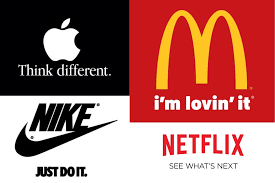In a competitive and ever-expanding market, brands are constantly looking for new ways to reach international audiences. However, one of the biggest challenges they face when attempting to expand globally is the language barrier. Translation is not just about converting words from one language to another. It’s about preserving the brand’s message, culture, and intent. In this context, a poor translation can have devastating consequences, damaging the brand’s reputation and its relationship with consumers.

The First Contact with an International Brand
When a brand enters a new market, its initial presence often establish through marketing materials that have been translated. Consumers see this effort as a sign of interest and respect for their culture and language. However, if the translation is inaccurate or unprofessional, that first impression can easily backfire.
Poorly translated phrases, grammatical mistakes, or language that fails to resonate with the target audience can create confusion, frustration, and even mistrust. This risk is even higher when cultural nuances are overlooked, which can lead to the brand’s message being misinterpreted entirely.
Negative Effects on Brand Perception
When a brand makes translation mistakes, it can give the impression of carelessness or a lack of professionalism. It ultimately harms its credibility. Companies operating at an international level must ensure that accurate and naturally adapte their content to the language and culture of their target market. A poorly translated message can not only cause consumers to lose interest. It also can raise doubts about the quality of the brand’s products or services.
In many cases, incorrect translations or misinterpretations can break the emotional connection consumers build with a brand. A company that fails to communicate effectively runs the risk of losing that connection — and with it, valuable business opportunities.
Famous Cases of Poor Translation
The impact of poor translation is nothing new. There are plenty of examples of global companies that have suffered significant consequences due to translation errors. One of the most well-known cases is Chevrolet and its “Nova” model, which failed to meet sales expectations in Spanish-speaking markets. In many Latin American countries,people interprete “Nova” as “No va” — meaning “It doesn’t go” — which naturally affected consumer perception of the car. This case highlights how even a small oversight in cultural adaptation can leave a lasting impact on both sales and brand image.
Another example is KFC, they once translated the famous slogan “Finger-lickin’ good” into Chinese as “Eat your fingers off.” Although the mistranslation was later corrected to “So good you’ll lick your fingers,” the initial error created confusion and, while not as damaging as Chevrolet’s case, served as a clear reminder of how a lack of attention to detail can affect a brand’s reputation.
The Importance of Professional and Culturally Competent Translators
To avoid these pitfalls, brands must invest in professional translation services. A translator must not only master the target language but also understand the cultural context and linguistic variations within different regions. Often, what conveys a positive message in one country can be interpreted negatively in another, which requires a nuanced and culturally sensitive translation approach.
Additionally, you should always review and adapt the translations to suit the specific context in which they will be used. This applies to advertising materials, websites, packaging, instruction manuals, and any other form of written communication. While machine translation tools or non-professional translators might seem like a cost-saving option, the risk to brand image is far too high.
The Long-Term Risks for Brands
A brand’s reputation depends not only on the quality of its products or services but also on how effectively it communicates with its audience. Translation errors can have a long-lasting negative effect, as consumers often associate such mistakes with the brand’s identity. In today’s digital world, where information spreads quickly. Also, translation blunders can easily go viral on social media, amplifying the damage to a brand’s image.
Moreover, today’s consumers are more informed and culturally aware than ever before. Companies that fail to properly adapt their message for diverse markets risk losing relevance in an increasingly globalized and connected world.
Conclusion
Communication mistakes can cost far more than a simple correction. They can destroy the trust and respect a brand has worked so hard to build. When expanding into international markets, brands must prioritize accuracy, cultural adaptation, and professionalism in every translation. Only then can they ensure their message reaches audiences worldwide effectively. They protect their reputation and increasing their chances of success in the global marketplace.



